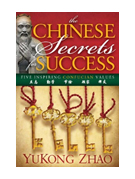Two sad truths about the state of education in the United States: Our K-12 students are trailing those of other nations, and there aren’t enough homegrown pupils focused on STEM.
With this in mind, one would think our leading universities would welcome exceptional applicants who demonstrated strength in subjects like science and math. Sadly, this isn’t the case for all Americans.
Each year, many Asian-American students with top SAT scores and GPAs who demonstrate excellent leadership skills (plus countless awards) are unjustifiably rejected by Harvard and other Ivy League schools. Asian-American admission rates at these universities have remained around 14-18% for the past 20 years, while during that same time period, the percentage of Asian-Americans between the ages of 18 and 21 almost doubled.
Stereotypes faced by Asian-Americans
Several studies have pointed out the possible root causes of this discrimination; Daniel Golden, Thomas Espenshade and Alexandra Radford say Asian-Americans are held to a higher standard than other races, and Ron Unz suggests a de facto quota system is in place.
Another important factor is the widespread social stereotypes against Asian-Americans: They aren’t creative enough, lack leadership skills, and don’t take risks. In a recent CNN article, these students were even labeled as “test robots.”
But these stereotypes (like most) are exaggerations based on outdated observations. A complete view of the facts offers a different conclusion.
Let’s start with creativity. Today, many Asian-Americans have become leading engineers and scientists, developing a large number of our technical innovations. According to Thomson Reuters, Asian-Americans account for 11 of the world’s top 20 material scientists, or 55%. In MIT Technology Review’s list of “35 Innovators Under 35” last year, 12 were Asian-Americans, or 34%. Asian-Americans have also demonstrated their creativity in other areas: Witness world-class cellist Yo-Yo Ma, Oscar-winning director Ang Lee and fashion designer Vera Wang.
A 2012 study released by the Ewing Marion Kauffman Foundation even said although Asian-Americans comprise less than 6% of our total population, they founded (or cofounded) more than 42% of immigrant founded engineering and technology startups from 2006-2012.
A better measure of leadership can be found in entrepreneurial skills
These percentages also debunk myths two and three. When most people claim that Asian-Americans lack leadership skills, they quote the number of CEO positions held by Asian-Americans in our largest corporations. One major factor for that small number is most Asian-American adults were born abroad (74%) and immigrated here due to their skills in science and engineering. This actually lowers their chances of becoming a CEO; American companies tend to award the title to marketing or finance majors.
Cultural and language barriers prevent Asian-Americans from reaching the top as well. For example, in most Asian cultures, opinions are expressed in a more reserved manner which can be misinterpreted as a communication fault here in the U.S.
A better measure of Asian-American leadership can be found in their entrepreneurial skills. Data shows immigrants are more likely to start companies than the general U.S. population—and Asian-Americans are an important part of this group. Names like Jerry Yang and Steve Chen, cofounders of Yahoo! and YouTube, respectively, are notable but Asian-Americans haven’t limited themselves to tech startups. They’ve also established a number of restaurants, gas stations and hotels.
One stereotype that is true: Asian-American families emphasize test scores. It is a measure of what a student has learned and contrary to prevailing perception, studies have positively linked success to standardized test scores. It is no accident that a Pew Research Center report in 2012 named Asian-Americans the highest-income earning and best-educated racial group. But the point is Asian-American students don’t stop at tests. Many also participate in extracurricular activities, including debate teams and volunteer work. In 2014, Richard Sander and other scholars conducted a study of more than 100,000 UCLA undergraduate applicants over the course of three years and found absolutely no correlation between race and “personal achievement.”
Harvard’s take on diversity? Racial balancing
Unfortunately, in their subjective and opaque “holistic admission evaluation process,” Harvard and other Ivy League schools often allow these misconceptions to play too big a role. Asian-American applicants are categorized as being “too quiet,” and “focused only on math and science” and “playing a musical instrument”—characteristics that are viewed negatively without any proof they will lead to less successful careers. In addition, evidence compiled by the Students for Fair Admissions, Inc. says Harvard evaluators consistently rank Asian-American candidates below white ones in “personal qualities.”
Despite this evidence, the Department of Education recently dismissed our civil rights complaint against Harvard. This is only a minor setback, and we will continue pressing Harvard and other leading universities to end their discriminatory admissions practices.
Harvard repeatedly claims it champions diversity. The irony is that no convincing proof indicates the university has made reasonable efforts requiring its admissions officers to better understand and accommodate an applicant’s cultural differences, including those of Asian-Americans. Harvard has instead focused on racial balancing, consequently creating a “bamboo ceiling” for its Asian-American applicants—and America’s economic prosperity.
Note: This Oped was first published by Forbes on July 9, 2015



